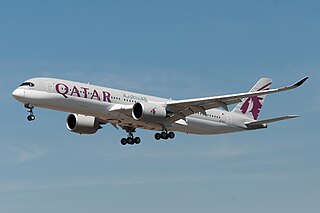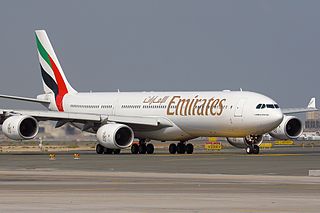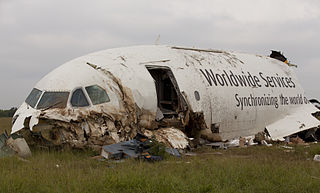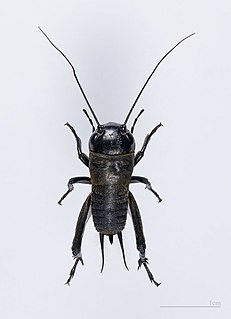Qantas Airways Limited is the flag carrier of Australia and its largest airline by fleet size, international flights and international destinations. It is the third oldest airline in the world, after KLM and Avianca, having been founded in November 1920; it began international passenger flights in May 1935. The Qantas name comes from "QANTAS", an acronym for its original name, "Queensland and Northern Territory Aerial Services", and it is nicknamed "The Flying Kangaroo". Qantas is a founding member of Oneworld, an airline alliance.

American Airlines Flight 587 was a regularly scheduled international passenger flight from New York's John F. Kennedy International Airport to Las Américas International Airport in Santo Domingo, the capital of the Dominican Republic. On November 12, 2001, the Airbus A300B4-605R flying the route crashed shortly after takeoff into the Belle Harbor neighborhood of Queens, a borough of New York City. All 260 people aboard the plane were killed, along with 5 people on the ground. It is the second-deadliest aviation incident involving an Airbus A300 and the second-deadliest aviation accident in U.S. history behind only American Airlines Flight 191.
Finnair is the flag carrier and largest airline of Finland, with its headquarters in Vantaa on the grounds of Helsinki Airport, its hub. Finnair and its subsidiaries dominate both domestic and international air travel in Finland. Its major shareholder is the government of Finland, which owns 55.8% of the shares. Finnair is a member of the Oneworld airline alliance. In 2017, it transported about 12 million passengers to over 100 European, 20 Asian and 7 North American destinations. At the end of 2017, the airline employed 5,918 people.

The Airbus A319 is a member of the Airbus A320 family of short- to medium-range, narrow-body, commercial passenger twin-engine jet airliners manufactured by Airbus. The A319 carries 124 to 156 passengers and has a maximum range of 3,700 nmi. Final assembly of the aircraft takes place in Hamburg, Germany and Tianjin, China.

The Airbus A320 family consists of short- to medium-range, narrow-body, commercial passenger twin-engine jet airliners by Airbus. The family includes the A318, A319, A320 and A321, as well as the ACJ business jet. The A320s are also named A320ceo following the introduction of the A320neo. The aircraft family can accommodate up to 236 passengers and has a range of 3,100 to 12,000 km, depending on model.

The Airbus A340 is a long-range, four-engine, wide-body commercial passenger jet airliner that was developed and produced by the European aerospace company Airbus. The A340 was assembled in Toulouse, France. It seats up to 375 passengers in the standard variants and 440 in the stretched -600 series. Depending on the model, it has a range of 6,700 to 9,000 nautical miles. Its distinguishing features are four high-bypass turbofan engines and three-leg main landing gear.

The Airbus A321 is a member of the Airbus A320 family of short- to medium-range, narrow-body, commercial passenger twin-engine jet airliners. The first derivative of the baseline A320, it has a stretched fuselage and entered service in 1994 with Lufthansa, around six years after the original A320. The aircraft shares a common type rating with all other Airbus A320-family variants, allowing previous A320-family pilots to fly the aircraft without the need for further training.

The Airbus A330 is a medium- to long-range wide-body twin-engine jet airliner made by Airbus. Versions of the A330 have a range of 5,000 to 13,430 kilometres and can accommodate up to 335 passengers in a two-class layout or carry 70 tonnes of cargo.

The Airbus A380 is the world's largest passenger airliner, a wide-body aircraft manufactured by Airbus. Airbus studies started in 1988 and the project was announced in 1990 to challenge the dominance of the Boeing 747 in the long haul market. The A3XX project was presented in 1994; Airbus launched the €9.5 billion ($10.7 billion) A380 programme on 19 December 2000. The first prototype was unveiled in Toulouse on 18 January 2005, with its first flight on 27 April 2005. It obtained its EASA and FAA type certificates on 12 December 2006. Difficulties in electrical wiring caused a two-year delay and the development cost ballooned to €18 billion.
Azores Airlines, previously known as SATA Internacional, is a Portuguese airline based in the municipality of Ponta Delgada, on the island of São Miguel in the autonomous archipelago of the Azores. A subsidiary of SATA Air Açores, the airline operates as the international arm of the regional network, connecting the archipelago with Europe and North America, from its hub at João Paulo II International Airport.

The Airbus A350 XWB is a family of long-range, twin-engine wide-body jet airliners developed by the European aerospace manufacturer Airbus. The A350 is the first Airbus aircraft with both fuselage and wing structures made primarily of carbon fibre reinforced polymer. Its variants seat 315 to 369 passengers in typical seating layouts. The A350 is positioned to succeed the A340 and to compete with the Boeing 787 and 777.

Kenya Airways Flight 431 was an international scheduled Abidjan–Lagos–Nairobi passenger service. On 30 January 2000, the Airbus A310-300 serving the flight crashed into the sea off the coast of Côte d'Ivoire, shortly after takeoff from Félix-Houphouët-Boigny International Airport, Abidjan. There were 179 people on board, of whom 169 were passengers. Only ten people survived in what was the first fatal accident for Kenya Airways.

Airbus Industrie Flight 129 was an Airbus Industrie A330-321 test flight that ended in a crash on 30 June 1994 at Toulouse-Blagnac Airport, killing all seven people aboard. The last test flown was to certify the plane's takeoff capability with a single engine failure. It was the first fatal accident involving an Airbus A330 as well as the first hull loss of the type. It remained the only fatal accident involving an A330 until the crash of Air France Flight 447 on 1 June 2009.

A side-stick or sidestick controller is an aircraft control column that is located on the side console of the pilot, usually on the righthand side, or outboard on a two-seat flightdeck. Typically this is found in aircraft that are equipped with fly-by-wire control systems.

Emirates Flight 407 was a scheduled international passenger flight operated by Emirates from Melbourne to Dubai, using an Airbus A340-500 aircraft. On 20 March 2009, the flight failed to take off properly at Melbourne Airport, hitting several structures at the end of the runway before eventually climbing enough to return to the airport for a safe landing. Although no fatalities or injuries resulted, damage to the aircraft was severe enough for the event to be classified by Australian Transport Safety Bureau as an "accident". It has been described "as close as we have ever come to a major aviation catastrophe in Australia" by aviation officials.

Air France Flight 447 (AF447/AFR447) was a scheduled Air France international passenger flight from Rio de Janeiro, Brazil, to Paris, France. On 1 June 2009, the Airbus A330 serving the flight stalled and did not recover, eventually crashing into the Atlantic Ocean at 02:14 UTC, killing all 228 passengers and crew on board.

Pilot Sound is a residential area in the northeast portion of the City of Edmonton in Alberta, Canada. It was established in 1981 through Edmonton City Council's adoption of the Pilot Sound Area Structure Plan, which guides the overall development of the area.

UPS Airlines Flight 1354 was a scheduled cargo flight from Louisville, Kentucky, to Birmingham, Alabama. On August 14, 2013, the Airbus A300 flying the route crashed and burst into flames short of the runway on approach to Birmingham–Shuttlesworth International Airport. Both pilots were pronounced dead at the scene of the crash. They were the only people aboard the aircraft.

The Airbus CityAirbus is a multinational project by Airbus Helicopters to produce an electrically-powered VTOL aircraft demonstrator. It is intended for the air taxi role, to avoid ground traffic congestion.


















